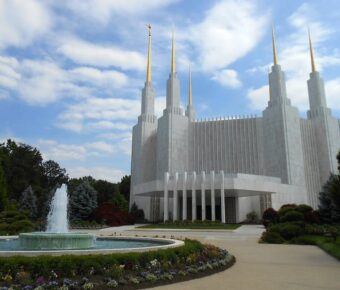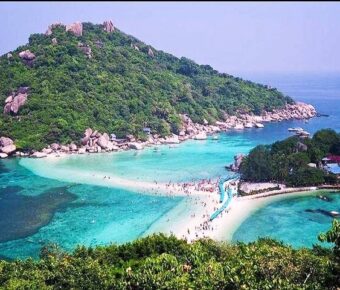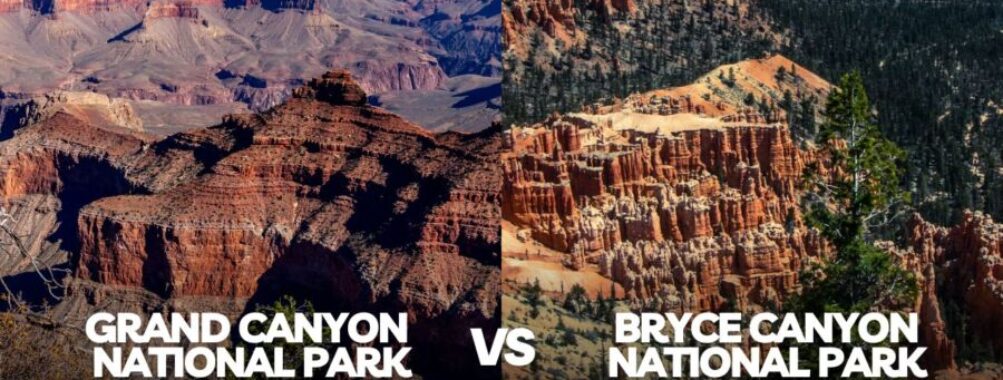
Grand Canyon National Park vs Bryce Canyon National Park: 5 Stunning Differences Every Explorer Should Know
The Grand Canyon and Bryce Canyon often top travelers’ must-visit lists regarding America’s stunning national parks. These natural wonders showcase the incredible diversity of our country’s landscapes, but they offer completely different experiences.
The Grand Canyon overwhelms visitors with its sheer size and depth, stretching across 277 miles and reaching depths of over a mile. At the same time, Bryce Canyon amazes with its dense collection of colorful hoodoos (tall, thin spires of rock) in a much smaller area. If you’re trying to choose between them, consider that the Grand Canyon offers vast, expansive views that humble even seasoned travelers. At the same time, Bryce provides a more intimate experience with its unique rock formations.
Both parks have seasonal considerations, too. Bryce sits at a higher elevation and gets significant snow in winter, limiting some activities. The Grand Canyon’s South Rim stays open year-round but gets extremely crowded during peak season. Your decision might come down to the time available, weather conditions, and whether you prefer dramatic scale or unique geological features.
Contents
- Fundamentals of Bryce Canyon National Park
- Geological Marvels of Bryce
- Bryce Canyon’s Unique Ecosystem
- Recreational Activities in Bryce
- Visitor Facilities and Lodging
- Fundamentals of Grand Canyon National Park
- Grand Canyon’s Vast Landscape
- Wildlife and Nature of the Grand Canyon
- Trekking and Exploration Opportunities
- Accommodations at the Grand Canyon
- Comparing Scenic Beauty
- Distinctive Landscapes
- Sunrise and Sunset Views
- Adventure and Activities
- Hiking Trails and Difficulty Levels
- Exploration Options Beyond Hiking
- Guided Tours and Educational Programs
- Wildlife and Natural Surroundings
- Local Fauna Explained
- Flora and Its Significance
- Stargazing and the Night Sky
- Best Spots for Stargazing
- Dark Sky Certification
- Planning Your Visit
- Best Times to Visit
- Building an Itinerary
- Accommodation and Reservations
- Travel and Accessibility
- Cultural Heritage
- The Indigenous Peoples of the Region
- Historical Significance of the Parks
- Environmental Conservation Efforts
- Sustainability Initiatives
- Wildlife Protection Programs
- Frequently Asked Questions
- What distinguishes the hiking experiences between Grand Canyon and Bryce Canyon National Parks?
- Which park should I visit if I have limited time, Grand Canyon or Bryce Canyon?
- What unique geological features can I expect to see at Bryce Canyon compared to the Grand Canyon?
- In terms of scenic drives, how do the Grand Canyon and Bryce Canyon National Parks differ?
- How does the accessibility of viewpoints vary between Bryce Canyon and the Grand Canyon’s South Rim?
- What is the best route from Grand Canyon to Bryce Canyon for visitors planning to see both parks?
- More Travel Guides
Fundamentals of Bryce Canyon National Park
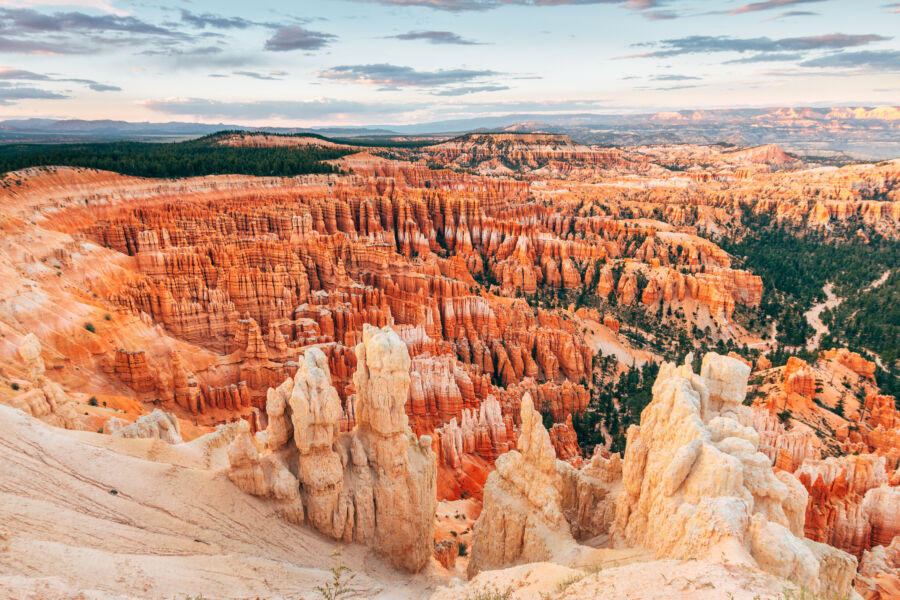
Bryce Canyon National Park is one of America’s most distinctive landscapes, famous for its colorful rock formations and unique natural features. This geological wonderland offers visitors extraordinary vistas, diverse wildlife, and memorable outdoor experiences throughout its 35,835 acres.
Geological Marvels of Bryce
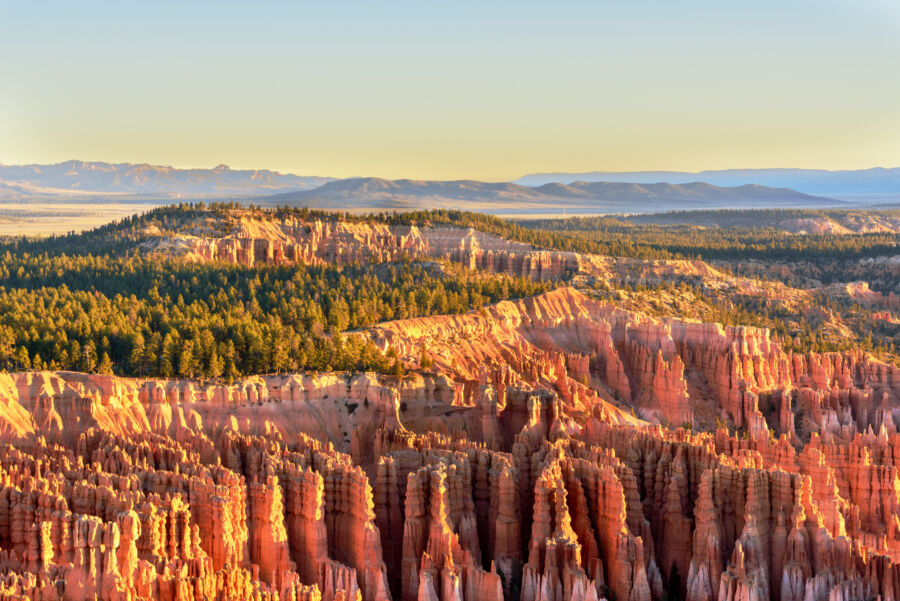
Bryce Canyon isn’t actually a canyon but a series of natural amphitheaters carved into the edge of the Paunsaugunt Plateau. The park’s most famous features are its hoodoos—tall, thin spires of rock that rise from the basin floor. These formations result from frost weathering and erosion from rainwater, which dissolves limestone.
Some hoodoos stand as tall as 10-story buildings! The park’s colorful layers reveal millions of years of geological history, with red, orange, and white bands telling the story of ancient lakes and rivers that once covered the area.
The most popular viewpoint is the Bryce Amphitheater, visible from sunrise, sunset, inspiration, and Bryce Points. Each offers a slightly different perspective of these stunning rock formations.
Visitors often remark that sunrise and sunset create the most dramatic lighting conditions when the hoodoos appear to glow with intense color.
Bryce Canyon’s Unique Ecosystem
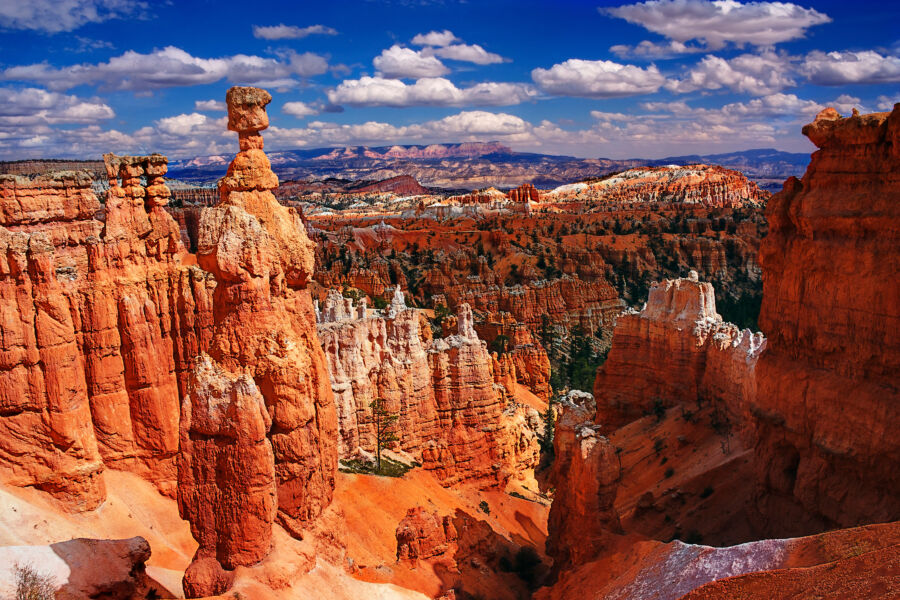
Despite its harsh appearance, Bryce Canyon supports a surprisingly diverse ecosystem. Due to its elevation range of 8,000-9,000 feet, the park spans three distinct climate zones.
The forests contain ponderosa pines, Douglas firs, and aspen groves, which provide habitat for wildlife. Visitors might spot mule deer, pronghorns, and over 100 bird species, including the magnificent Utah prairie dog, a threatened species.
Plant life varies dramatically from the rim to the canyon floor. Desert plants thrive in the hot, dry conditions below, while forests dominate the cooler, moister rim environments.
Bryce’s night skies are another natural wonder. The park holds International Dark Sky Park status, making it one of the best places in America for stargazing. On clear nights, visitors can see thousands of stars and the Milky Way with the naked eye.
Recreational Activities in Bryce
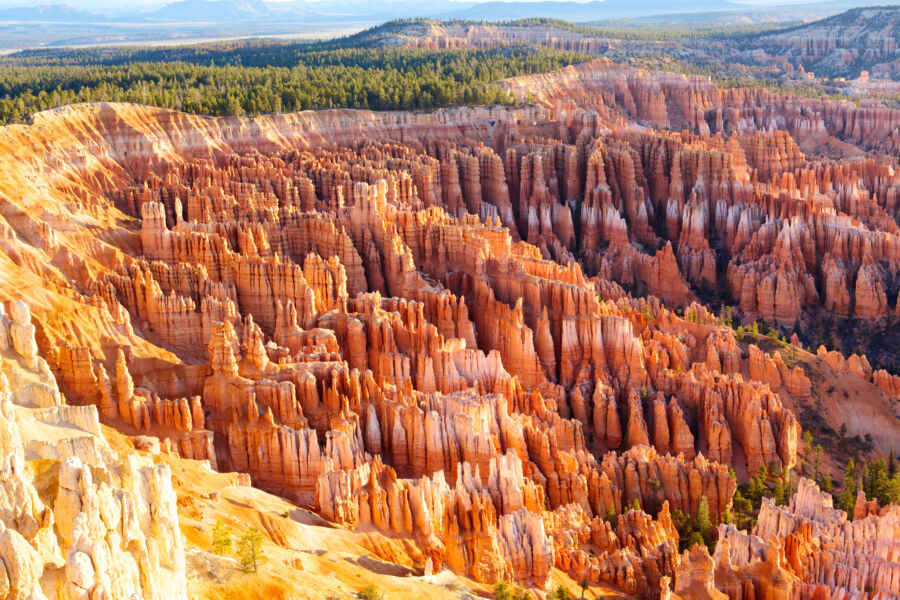
Hiking remains the most popular activity in Bryce Canyon, with trails ranging from easy rim walks to challenging backcountry routes. The Navajo Loop and Queen’s Garden trails offer a close-up view of the hoodoos and take hikers into the amphitheater.
The 18-mile scenic drive features numerous pullouts with spectacular viewpoints for those seeking less strenuous options. Rangers lead daily programs, including geology talks and guided hikes during peak season.
Winter brings unique opportunities for snowshoeing and cross-country skiing. The white snow creates a stunning contrast against the red rocks.
Horseback riding tours allow visitors to experience the canyon from a different perspective. These guided trips follow designated bridle paths through the amphitheater.
Photography enthusiasts find endless inspiration in Bryce’s dramatic landscapes, especially during golden-hour lighting conditions.
Visitor Facilities and Lodging
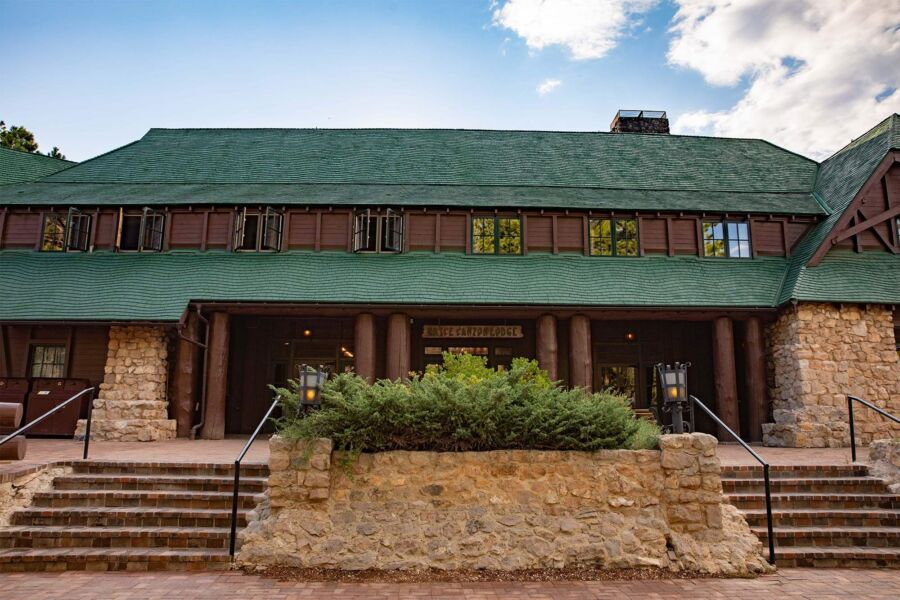
The historic Bryce Canyon Lodge, built in 1925, offers rustic yet comfortable accommodations inside the park from April through November. Its stone fireplace and pine architecture reflect classic National Park Service rustic design.
The North and Sunset Campgrounds provide tent and RV sites for year-round options, though reservations are recommended during peak summer.
The Visitor Center is an excellent starting point with exhibits explaining the park’s geology and ecology. Rangers provide maps and safety information for those heading into the backcountry.
Several dining options exist within the park, including the Lodge Restaurant and the General Store. Outside the park entrance, the small town of Bryce offers additional restaurants and basic services.
Water stations are available throughout the park, but visitors should bring their bottles and stay hydrated, especially at this high elevation where dehydration occurs more quickly than at sea level.
Fundamentals of Grand Canyon National Park

Grand Canyon National Park is one of America’s most iconic natural wonders. The park offers visitors breathtaking views, diverse wildlife, and numerous recreational opportunities, attracting millions of tourists annually.
Grand Canyon’s Vast Landscape

The Grand Canyon is truly massive in scale, stretching 277 miles long, up to 18 miles wide, and reaching depths of over a mile. This UNESCO World Heritage Site was carved by the Colorado River over millions of years, creating the stunning layered rock formations visible today.
The park is divided into two main sections: the South and North Rim. The South Rim remains open year-round and receives most visitors due to its accessibility and well-developed facilities. It offers numerous viewpoints, such as Mather Point and Yavapai Observation Station.
The North Rim sits about 1,000 feet higher in elevation and is only open from mid-May to mid-October due to heavy winter snowfall. It’s less crowded and provides a different perspective of the canyon with viewpoints like Point Imperial and Cape Royal.
The weather varies dramatically throughout the canyon. The rim areas can be cool, while the inner canyon often reaches scorching temperatures in summer.
Wildlife and Nature of the Grand Canyon
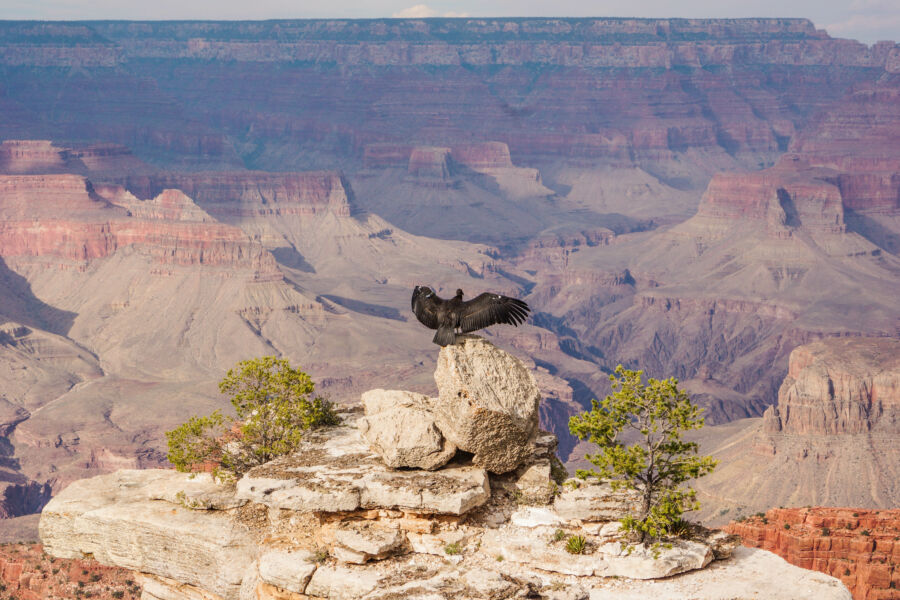
The Grand Canyon hosts remarkable biodiversity, with over 90 mammal species, 450 bird species, and varied plant life adapted to different elevation zones. Visitors might spot elk grazing near the forest edges, especially during dawn and dusk.
Desert bighorn sheep navigate the steep canyon walls with impressive agility. Thanks to conservation efforts, California condors, once nearly extinct, now soar above the canyon. Mule deer, coyotes, and numerous reptiles also call this landscape home.
The park’s vegetation changes dramatically with elevation. The rim features pine and juniper forests, while the inner canyon hosts desert plants like cacti and yucca. Wildflower displays brighten the landscape in the spring and summer months.
Rangers offer wildlife programs to help visitors understand and appreciate these diverse ecosystems. The park emphasizes viewing wildlife from a safe distance to protect animals and people.
Trekking and Exploration Opportunities
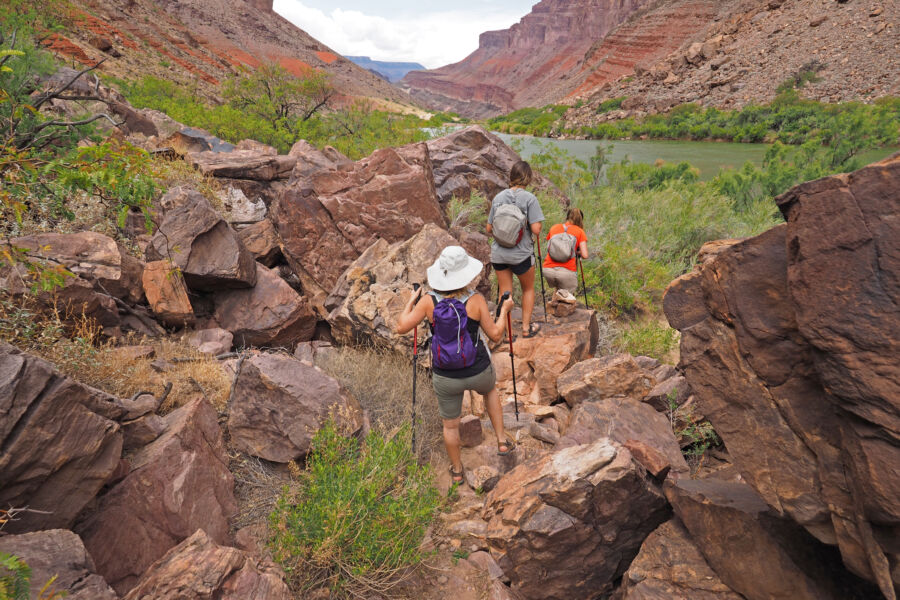
Hiking opportunities range from easy rim trails to challenging backcountry adventures. The Rim Trail offers accessible, mostly paved paths with stunning views and minimal elevation change—perfect for casual walkers or those with limited mobility.
Trails like Bright Angel and South Kaibab descend into the canyon for more adventure. These require more preparation as temperatures rise significantly as hikers descend. The famous Rim-to-Rim hike crosses the entire canyon but demands serious planning and physical conditioning.
Ranger-led programs provide educational opportunities about geology, history, and ecology. Mule trips offer another way to experience the canyon for those who prefer not to hike.
River rafting along the Colorado River presents a unique perspective of the canyon from below. These trips range from one-day excursions to multi-week adventures through the heart of the canyon.
Accommodations at the Grand Canyon

Lodging options within the park vary from historic hotels to rustic cabins. The South Rim features the iconic El Tovar Hotel, built in 1905 with a prime location just steps from the canyon edge. Bright Angel Lodge offers more affordable rooms, while Phantom Ranch provides the only lodging at the canyon bottom.
The North Rim has the Grand Canyon Lodge, perched dramatically on the edge with stunning views. These in-park accommodations are often booked up to a year in advance, especially during peak summer months.
Camping enthusiasts can choose between developed campgrounds like Mather Campground (South Rim) and North Rim Campground. These provide amenities like restrooms, drinking water, and fire rings. Backcountry camping requires permits and proper preparation.
Nearby gateway communities like Tusayan offer additional hotels and amenities for those unable to secure in-park lodging. Many visitors also stay in Williams or Flagstaff and visit the canyon.
Comparing Scenic Beauty
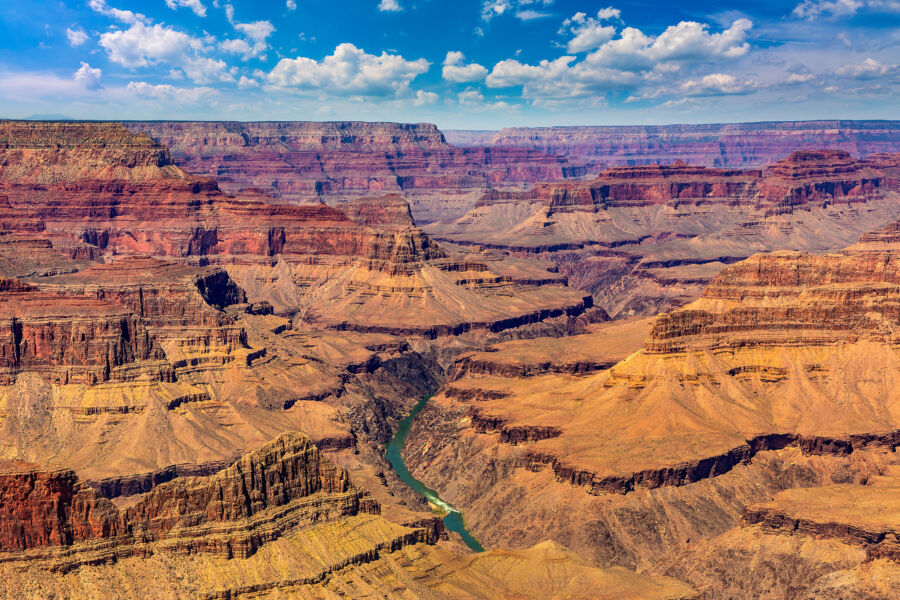
Both canyons offer breathtaking views that leave visitors in awe, but they showcase nature’s artistry in completely different ways. The Grand Canyon impresses with its immense scale, while Bryce Canyon captivates with its intricate details and unique formations.
Distinctive Landscapes
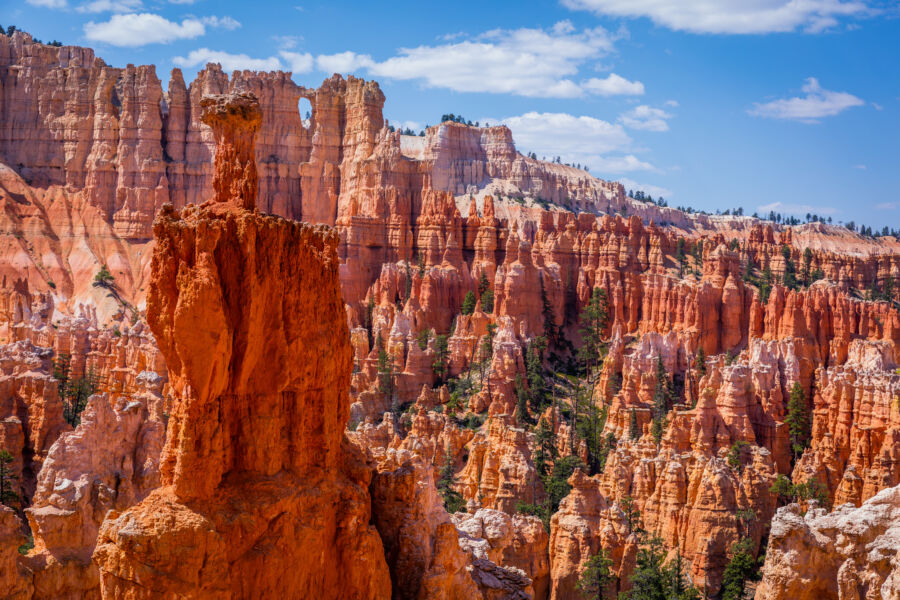
The Grand Canyon presents a vast panorama that stretches as far as the eye can see. Its enormity makes it so impressive—layers of red, orange, and brown sandstone reveal millions of years of Earth’s history. The Colorado River winds through the bottom, a tiny ribbon from the rim viewpoints that’s actually 277 miles long.
On the other hand, Bryce Canyon is known for its otherworldly hoodoos – tall, thin spires of rock that rise from the canyon floor. These formations create what looks like a natural amphitheater filled with stone “people.” These formations’ red, orange, and white colors appear almost magical, especially when contrasted against a clear blue sky.
Many visitors find Bryce “trippy and weird” in the most delightful way, offering something completely different from the Grand Canyon’s majesty.
Sunrise and Sunset Views

Dawn and dusk transform both parks into showcases of color and light. At the Grand Canyon, sunrise casts long shadows across the massive expanse, gradually illuminating layer after layer of rock formations. Sunset bathes the canyon walls in warm golden light that shifts from yellow to deep orange and finally purple.
Bryce Canyon might offer even more dramatic light shows. As the sun rises, the hoodoos catch the light first at their tips, creating a glowing forest of stone spires. The red-orange sandstone seems to come alive, glowing from within.
Photographers often plan entire trips around capturing these moments. Inspiration Point and Bryce Point are particularly popular viewpoints at Bryce, while Mather Point and Hopi Point draw crowds at the Grand Canyon.
See Related: Where to Stay in Grand Canyon: Top Amazing Lodging Options
Adventure and Activities
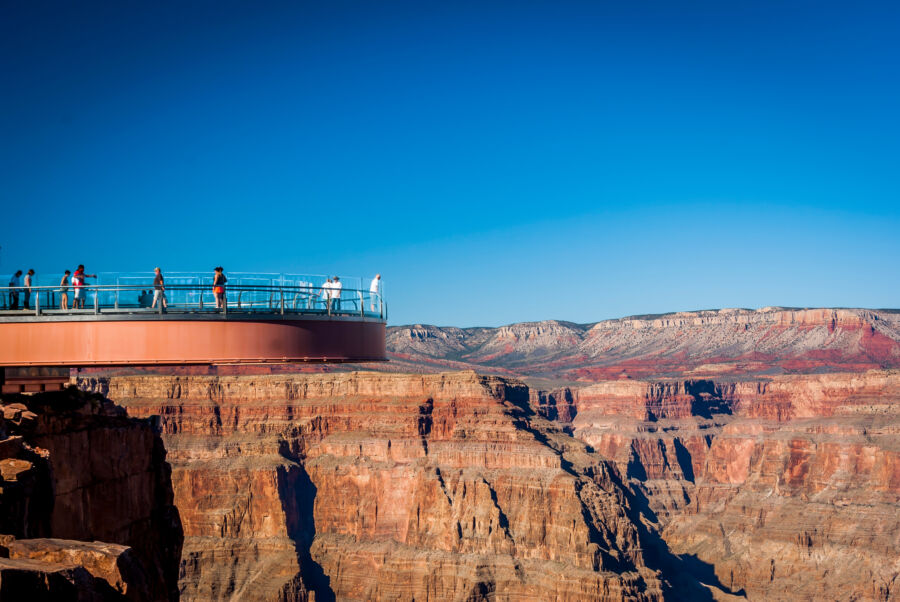
Grand Canyon and Bryce Canyon offer unforgettable adventures for visitors of all skill levels. These parks provide stunning backdrops for outdoor activities, with options ranging from strolls to challenging excursions.
Hiking Trails and Difficulty Levels

The Grand Canyon features trails with varying difficulty levels. The Rim Trail offers easy walking with spectacular views, perfect for families or casual hikers. Bright Angel Trail descends into the canyon with steep switchbacks and dramatic elevation changes for more challenge.
Bryce Canyon is known for its network of relatively easier trails. The Queen’s Garden and Navajo Loop trails are moderate in difficulty but deliver incredible views of the famous hoodoo formations. As the search results mention, Bryce is “full of easy to moderate hikes with epic views of the Hoodoos.”
Unlike the extreme elevation changes of the Grand Canyon, Bryce’s trails tend to be shorter and more manageable for the average visitor. However, both parks require proper preparation with water, sun protection, and appropriate footwear.
Exploration Options Beyond Hiking

Both parks offer alternatives to traditional hiking. At Grand Canyon, visitors can book helicopter tours for breathtaking aerial views of this massive landscape. The Colorado River also provides thrilling rafting adventures for those seeking water-based excitement.
Bryce Canyon’s smaller size makes it ideal for bicycling, with several designated routes. According to search results, “bicycles are a popular way to explore both parks.” Horseback riding is another fantastic option at Bryce, allowing visitors to experience the park differently.
Both parks offer shuttle systems that transport visitors to key viewpoints. These are especially useful during peak seasons when parking becomes limited. Winter brings opportunities for snowshoeing at Bryce, while the Grand Canyon’s South Rim remains open year-round.
Guided Tours and Educational Programs
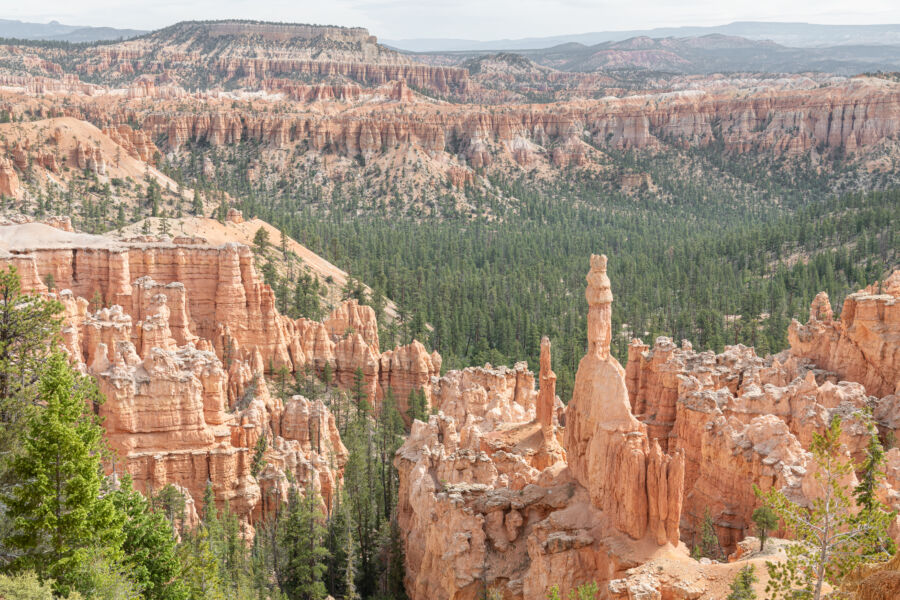
Ranger-led programs enhance the visitor experience at both parks. Daily talks about geology, wildlife, and human history are available at Grand Canyon. The park also hosts night sky programs, where visitors can stargaze in one of America’s darkest locations.
Bryce Canyon’s smaller size allows for more intimate guided experiences. Rangers lead “Hoodoo Walks” that explain the unique geological formations. The park’s astronomy programs are particularly renowned, as Bryce’s high elevation and clean air create ideal stargazing conditions.
Both locations offer guided adventure tours for those wanting structured experiences. These tours provide expert knowledge, safety, and convenience for visitors who prefer not to plan their itineraries. Educational programs cater to all ages, with special activities for children to earn Junior Ranger badges.
Wildlife and Natural Surroundings

Both national parks offer incredible opportunities to spot diverse wildlife and experience unique natural environments. The ecosystems in each park support different animals and plant life adapted to their specific climate and terrain.
Local Fauna Explained

Grand Canyon National Park hosts an impressive array of animals across its vast ecosystem. Visitors might spot mule deer grazing along forest edges or elusive mountain lions in more remote areas. Once nearly extinct, the California condor soars above the canyon’s rim after successful reintroduction efforts.
Desert bighorn sheep navigate the steep canyon walls with remarkable agility. These nimble creatures are perfectly adapted to the harsh environment and can often be spotted from viewpoints along the South Rim.
Due to its smaller size, Bryce Canyon’s wildlife tends to be more visible. Prairie dogs are common sights, popping up from their burrows and chattering with each other. Visitors frequently encounter pronghorn antelope in meadow areas near the park entrance.
Mule deer and squirrels are abundant in both parks. The Albert’s squirrel, with its distinctive tufted ears, is a Grand Canyon specialty, while Bryce features the golden-mantled ground squirrel.
Flora and Its Significance
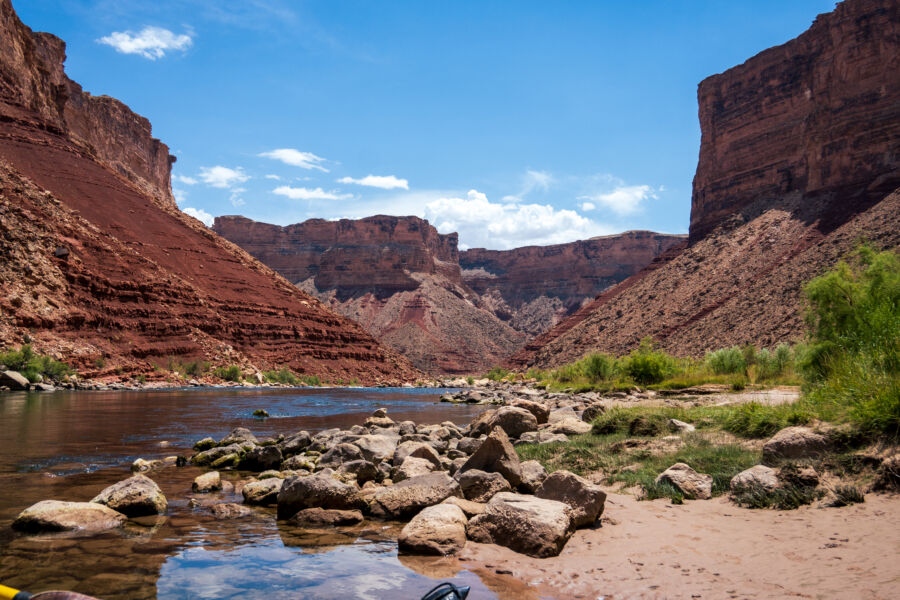
Grand Canyon’s extreme elevation changes create diverse plant zones. The rim areas feature ponderosa pine forests, while the inner canyon transforms into desert vegetation with cacti, yucca, and desert wildflowers. During spring, the desert blooms with vibrant colors contrasting beautifully against the red rocks.
The park’s riparian areas along the Colorado River create unique mini-ecosystems with cottonwoods and willows that provide crucial habitats for many species.
Forests of ponderosa pine, spruce, and fir trees dominate Bryce Canyon’s plant life. The bristlecone pine, among Earth’s oldest living organisms, can be found in the park’s higher elevations. Some of these ancient sentinels are more than 1,600 years old!
Wildflowers carpet the meadows between June and August, creating spectacular displays of color. The plant communities here play a vital role in preventing erosion of the delicate hoodoo formations that make Bryce famous.
Stargazing and the Night Sky
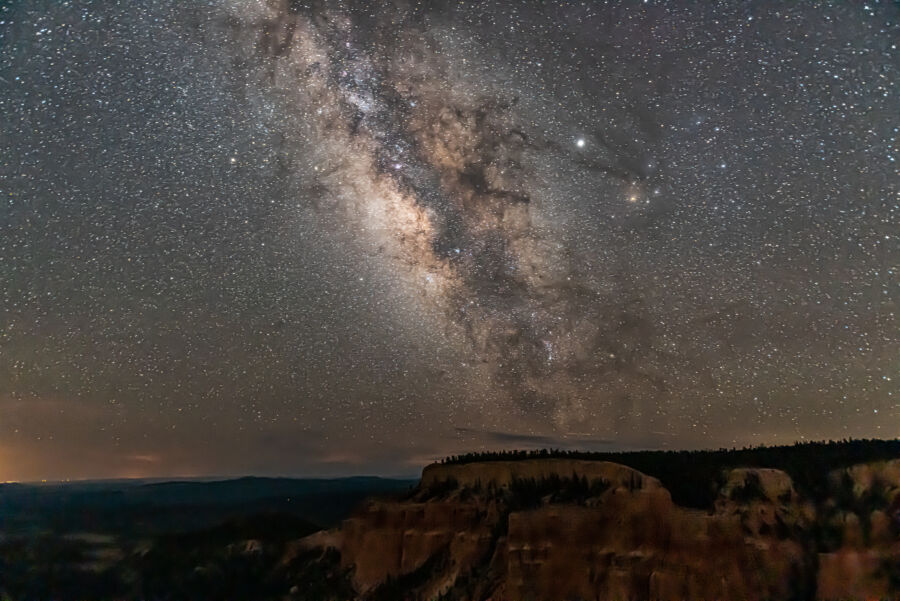
Both parks offer incredible celestial views but differ in what they provide for stargazers. Elevation, air quality, and distance from city lights are crucial in creating the perfect stargazing experience.
Best Spots for Stargazing
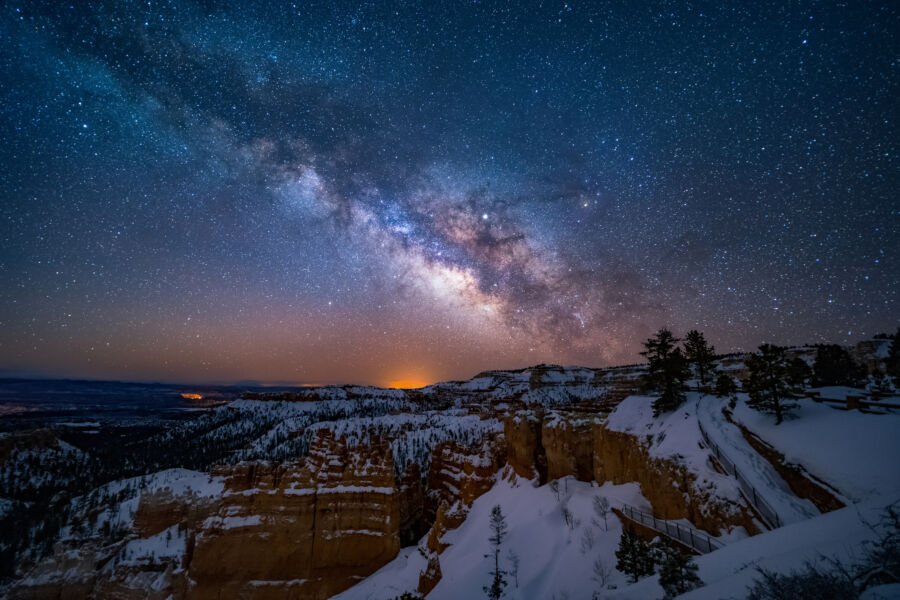
Bryce Canyon National Park is widely considered superior for stargazing. Its higher elevation (over 8,000 feet) gives visitors clearer night sky views with less atmospheric interference. The park’s geography creates natural amphitheaters that block out any distant light pollution.
The best viewing spots in Bryce include Sunset Point and the main amphitheater area. Rangers often set up telescopes here during astronomy programs. The combination of dark skies and the silhouetted hoodoos creates a magical setting that feels otherworldly.
Grand Canyon offers good stargazing, too, particularly from the North Rim, which is at a higher elevation than the South Rim. Lipan Point and Yavapai Point are popular spots where the vast canyon creates an expansive view of the horizon.
Dark Sky Certification
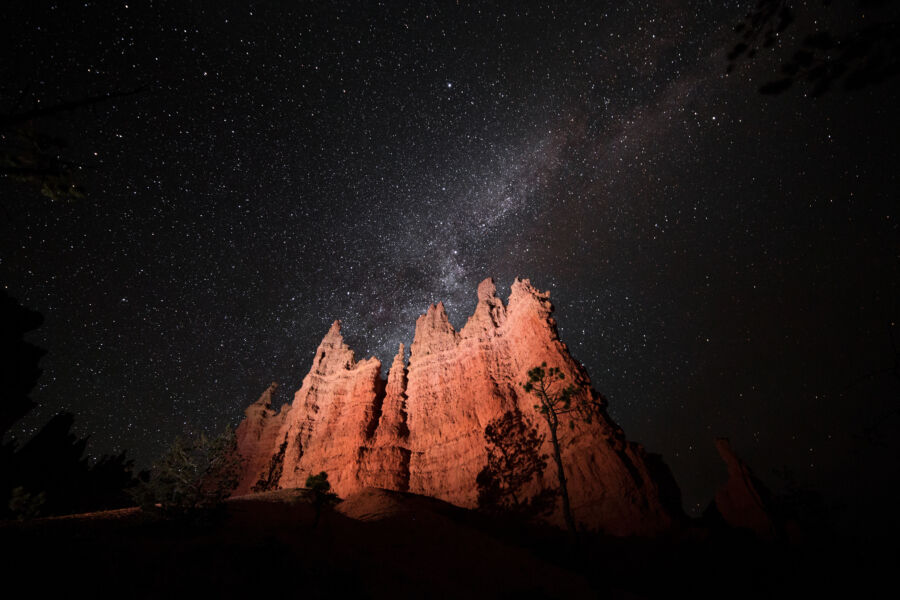
Bryce Canyon holds the prestigious International Dark-Sky Association certification, recognizing it as one of the darkest accessible places in the country. This certification means the park actively protects its night environment through lighting policies and public education.
The park runs one of the oldest astronomy programs in the National Park Service, including regular night sky programs and an annual astronomy festival. On clear nights, visitors can see up to 7,500 stars compared to just a few dozen visible in urban areas.
Grand Canyon is working toward a similar dark sky status but faces challenges due to nearby development and its larger size. The park has been upgrading lighting fixtures to reduce light pollution and offers ranger-led stargazing programs seasonally, though not as extensive as Bryce’s dedicated program.
See Related: Grand Canyon National Park vs Yosemite National Park: Stunning Differences Every Nature Lover Should Know
Planning Your Visit

Preparing for a Grand Canyon or Bryce Canyon trip requires careful planning. Depending on when you visit, each park offers unique experiences, and both require advanced preparation to make the most of your time.
Best Times to Visit

The Grand Canyon is open year-round, but spring (April-May) and fall (September-October) offer the most pleasant temperatures and smaller crowds. Summer brings intense heat at the bottom of the canyon, often exceeding 100°F, while the rim stays more comfortable.
Bryce Canyon shines in different seasons. Summer (June-August) provides warm days perfect for hiking and is the busiest time. Winter transforms the orange hoodoos with snow, creating a magical landscape—though some trails close due to ice.
Fall brings spectacular color contrasts to both parks. The changing aspens against Bryce’s red rocks are stunning in late September.
Weather varies dramatically by elevation. The Grand Canyon’s rim sits at 7,000 feet, while Bryce reaches nearly 9,000 feet—meaning it’s significantly colder than you might expect, especially at night.
Building an Itinerary
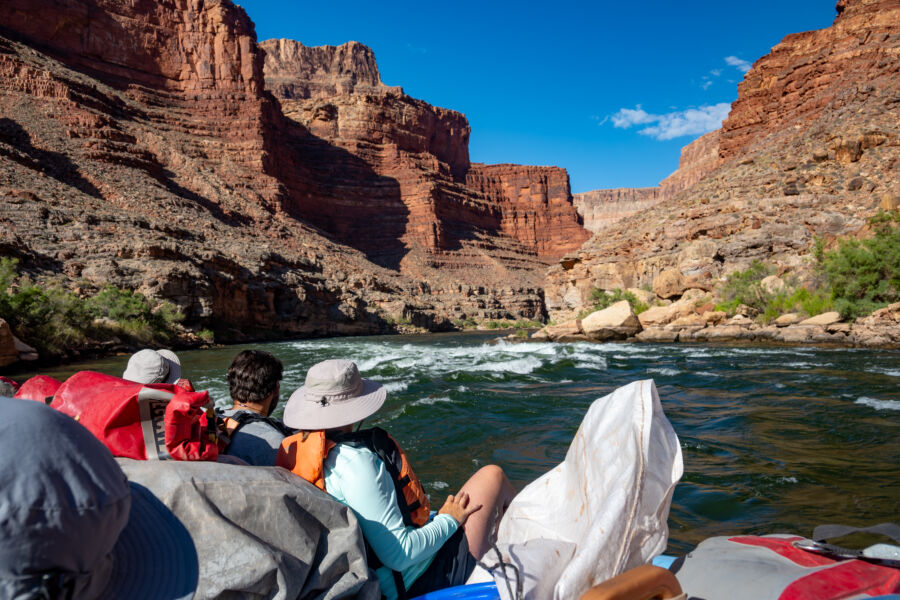
For the Grand Canyon, plan at least two full days. Spend one day exploring the South Rim viewpoints and visitor center. Reserve your second day for hiking below the rim on trails like Bright Angel or South Kaibab.
Bryce Canyon can be seen in one full day, though two is better. The 18-mile scenic drive with its 13 viewpoints takes about 3-4 hours with stops. Save time for at least one hike among the hoodoos—the Queen’s Garden/Navajo Loop Combination (3 miles) is perfect.
If combining both parks in one road trip, allow for the 5-hour drive between them. Many travelers include Zion National Park in this route, creating the ultimate Southwest parks experience.
For those short on time, prioritize sunrise at Bryce (Sunrise Point) and sunset at Grand Canyon (Hopi or Mather Point). These magical lighting conditions showcase each park at its finest.
Accommodation and Reservations

Grand Canyon’s South Rim offers several lodging options inside the park, including the historic El Tovar Hotel and Bright Angel Lodge. These fill up 6-12 months in advance, especially during summer.
Bryce has fewer in-park options: Bryce Canyon Lodge and two campgrounds. The lodge, a charming 1920s building, books up quickly for the April-October season.
Both parks have nearby towns with additional hotels and accommodations. Tusayan is just outside Grand Canyon’s South entrance, while Bryce Canyon City sits at Bryce’s doorstep.
Camping requires reservations at both parks during peak season. Grand Canyon’s Mather Campground and Bryce’s North Campground accept bookings up to six months ahead.
Budget travelers should consider staying in Kanab, Utah, between parks. It offers reasonable rates and is a good base for exploring the region.
Travel and Accessibility
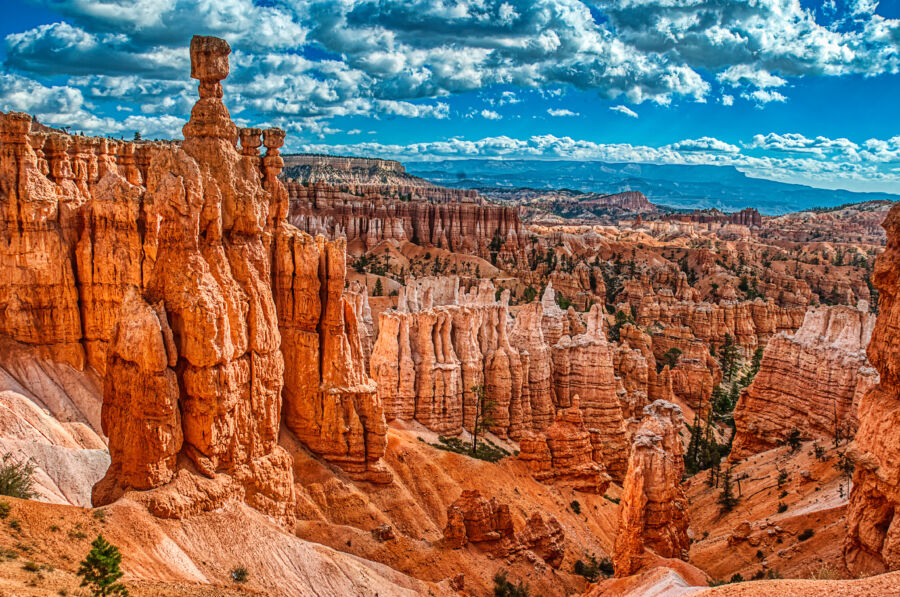
Las Vegas makes an excellent starting point for visiting either park. The drive to the Grand Canyon South Rim takes about 4.5 hours, while Bryce Canyon is 4 hours from Vegas. Both routes offer scenic drives through the Southwest landscape.
The Grand Canyon offers a free shuttle bus system on the South Rim, eliminating parking hassles during busy periods. The buses run year-round on the Hermit Road route and summer-only on the Kaibab Rim route.
Bryce Canyon also operates a shuttle system from April through October. While optional, it’s highly recommended during peak season when parking lots fill quickly.
For those flying in, consider searching for flights to Las Vegas, Phoenix, or Salt Lake City. From there, rental cars provide the most flexibility for park exploration.
Both parks offer accessible viewpoints and visitor centers. The Grand Canyon’s paved Rim Trail and Bryce’s Sunset Point provide stunning vistas accessible to wheelchairs and those with limited mobility.
Cultural Heritage

Grand Canyon and Bryce Canyon National Parks offer rich cultural histories stretching back thousands of years. These landscapes have been home to various indigenous groups and hold significant meaning in American heritage.
The Indigenous Peoples of the Region

The Southern Paiute have deep connections to Bryce Canyon, calling it “Angka-ku-wass-a-wits” (red-painted faces). They believed the colorful hoodoos were once people transformed to stone by the trickster Coyote. They used the area for hunting and gathering for centuries before European contact.
At the Grand Canyon, several tribes have historical ties to the land. The Havasupai, Hualapai, Navajo, Hopi, and Zuni all consider portions of the canyon sacred. The Havasupai (“people of the blue-green waters”) still live in a section of the canyon, maintaining their traditional way of life.
The Paiute people have creation stories about both locations, viewing these landscapes as physical places and integral parts of their spiritual and cultural identity.
Historical Significance of the Parks

Grand Canyon became a national monument in 1908 and gained national park status in 1919. Early explorers like John Wesley Powell helped document and bring attention to this natural wonder. The historic El Tovar Hotel, built in 1905, represents the early tourism era and still welcomes visitors today.
Bryce Canyon’s path to protection began when Mormon pioneers settled in the area in the 1850s. The park is named after Ebenezer Bryce, who famously described it as “a hell of a place to lose a cow.” It became a national monument in 1923 and a national park in 1928.
Both parks feature historic structures from the early 20th century that showcase rustic park architecture. The CCC (Civilian Conservation Corps) built trails, roads, and facilities in both parks during the Great Depression, leaving lasting infrastructure.
Environmental Conservation Efforts
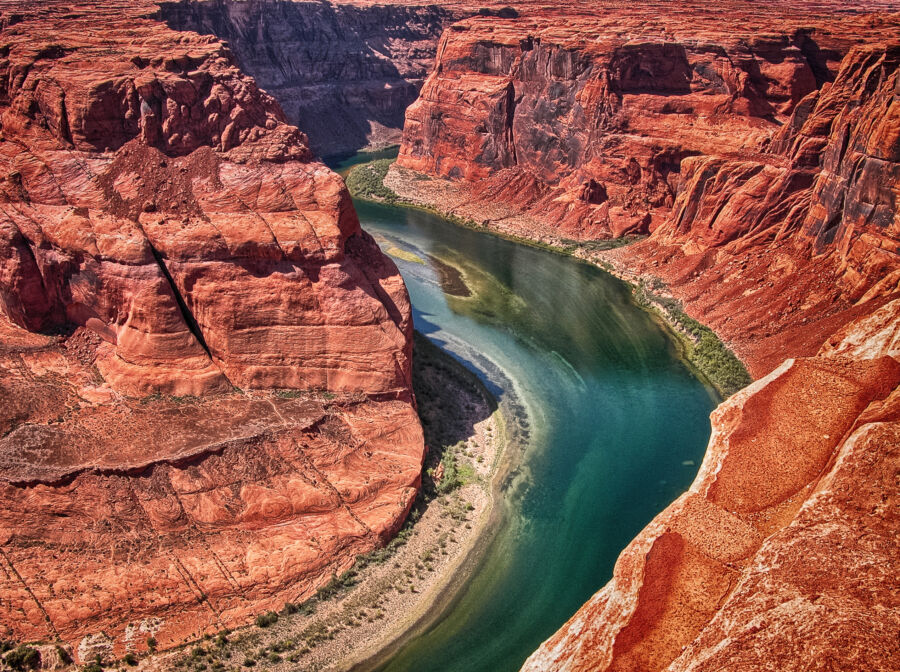
Grand Canyon and Bryce Canyon National Parks have developed strong programs to protect their unique ecosystems and natural resources. Park officials work diligently to balance visitor access with preserving these precious landscapes.
Sustainability Initiatives
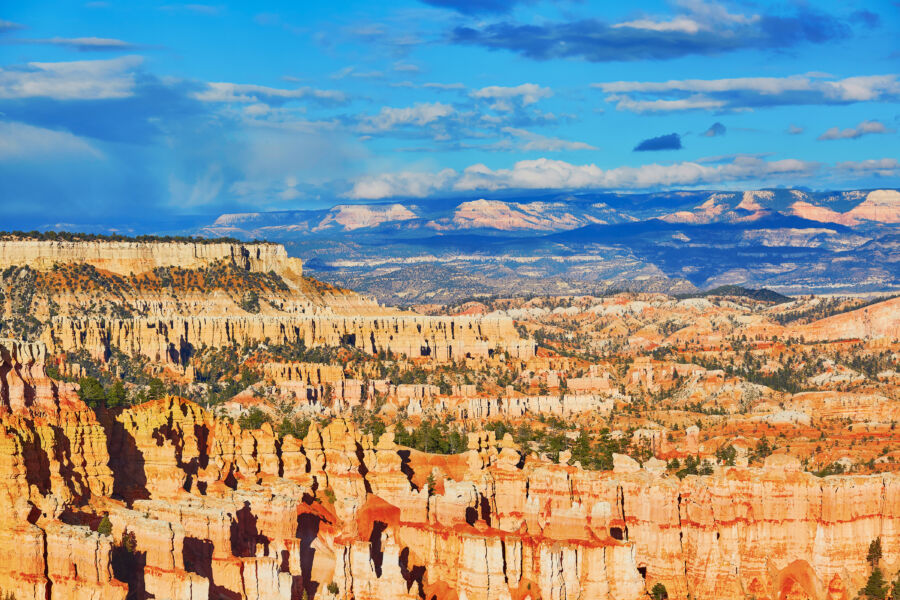
Grand Canyon National Park has implemented impressive water conservation measures throughout its facilities. The South Rim uses water-efficient fixtures and rainwater harvesting systems to reduce strain on limited resources. They’ve also installed solar panels at visitor centers, cutting their carbon footprint significantly.
Bryce Canyon takes a different approach due to its unique environment. Park managers monitor climate impacts on the famous hoodoos and have developed specialized erosion control methods. They also use satellite imagery to track vegetation changes across 15 plant alliances, helping them adapt management strategies as the climate shifts.
Both parks have moved toward electric shuttle systems to reduce emissions. Grand Canyon’s shuttle buses transport millions of visitors annually, keeping thousands of cars off park roads. Bryce Canyon’s smaller shuttle system operates seasonally but still helps minimize pollution.
Wildlife Protection Programs
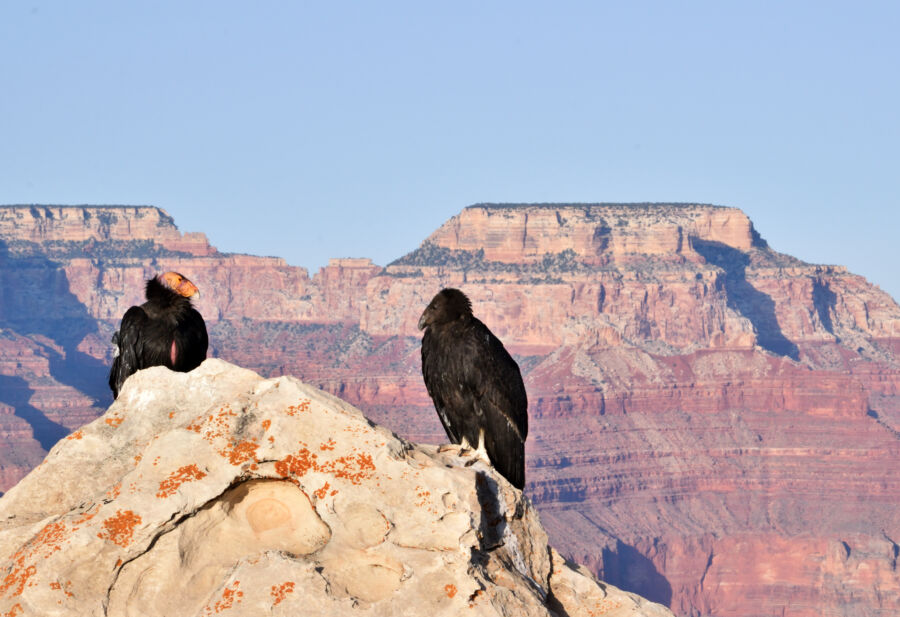
Grand Canyon protects endangered species like the California condor through intensive monitoring programs. Rangers track condor populations and work with wildlife biologists to ensure their recovery. The park also manages habitats for desert bighorn sheep and over 370 bird species.
Land bird monitoring is a key conservation focus at Bryce Canyon. The Northern Colorado Plateau Network conducts regular surveys to track bird populations and detect changes that might indicate ecosystem issues. The park also restricts access to sensitive wildlife areas during breeding seasons.
Both parks have implemented dark sky initiatives to protect nocturnal wildlife. Light pollution disrupts animal behavior, so they’ve installed special lighting fixtures and offer night sky programs to educate visitors. Grand Canyon earned International Dark Sky Park status in 2019, with Bryce Canyon receiving the same designation earlier.
See Related: Grand Canyon National Park vs Rocky Mountain National Park: Which Epic Adventure Destination Should You Choose?
Frequently Asked Questions

What distinguishes the hiking experiences between Grand Canyon and Bryce Canyon National Parks?
The Grand Canyon offers more strenuous hiking with dramatic elevation changes. Trails like Bright Angel and South Kaibab take you deep into the canyon, requiring significant stamina to climb back up.
Bryce Canyon features shorter, more accessible trails that wind through its famous hoodoos. The Queen’s Garden and Navajo Loop trails are moderate in difficulty but deliver spectacular views without the extreme elevation challenges of the Grand Canyon.
Weather also impacts hiking differently at each park. The Grand Canyon can reach dangerous temperatures in summer, especially at lower elevations. Bryce sits at a higher elevation with cooler temperatures but can have icy trails in winter.
Which park should I visit if I have limited time, Grand Canyon or Bryce Canyon?
Bryce Canyon is more manageable for short visits. You can experience its highlights in just one day, hitting the main viewpoints and walking a short trail among the hoodoos.
The Grand Canyon requires more time to truly appreciate. Its massive size means you’ll want at least 2-3 days to see different areas and perspectives. Bryce gives you more bang if you only have a few hours.
Accessibility is another factor. Bryce’s main attractions are closer together, while the Grand Canyon’s viewpoints can be miles apart, requiring more travel time between sights.
What unique geological features can I expect to see at Bryce Canyon compared to the Grand Canyon?
Bryce Canyon is famous for its hoodoos – tall, thin spires of rock in orange, pink, and red hues. These formations create what looks like a natural amphitheater filled with stone sculptures.
The Grand Canyon showcases layer upon layer of rock, revealing billions of years of Earth’s history. Its defining feature is its immense scale and the dramatic way the Colorado River has carved through these ancient rock layers.
Bryce’s formations result from frost weathering and erosion, while the Grand Canyon was primarily carved by the persistent flow of the Colorado River over millions of years.
In terms of scenic drives, how do the Grand Canyon and Bryce Canyon National Parks differ?
The Grand Canyon’s Desert View Drive spans 25 miles along the South Rim, with numerous pullouts offering vastly different perspectives of the canyon’s depth and breadth.
Bryce Canyon’s 18-mile scenic drive follows the rim of the Paunsaugunt Plateau. It includes 13 viewpoints, each showcasing different aspects of the hoodoo-filled amphitheaters below.
Bryce’s drive is more intimate, with viewpoints closer together. You can complete it in half a day, while the Grand Canyon’s drives require more time due to their length and the temptation to linger at each spectacular vista.
How does the accessibility of viewpoints vary between Bryce Canyon and the Grand Canyon’s South Rim?
Bryce Canyon’s viewpoints are generally more accessible, with shorter walks from parking areas to overlooks. Most viewpoints are just steps from parking lots, making them ideal for visitors with mobility concerns.
The Grand Canyon’s South Rim offers a mix of easily accessible viewpoints near the visitor center and more remote ones requiring longer walks or drives. Mather Point is wheelchair accessible, while others may involve short hikes.
Bryce also offers a shuttle system during peak season, making it easy to hop between viewpoints without worrying about parking. This system is similar to the Grand Canyon’s but covers a smaller area.
What is the best route from Grand Canyon to Bryce Canyon for visitors planning to see both parks?
The most scenic route from the Grand Canyon to Bryce Canyon is via Highway 89 north through Page, Arizona, then west on Highway 12 through Utah. This journey covers approximately 150 miles and takes about 3-4 hours of driving time.
This route offers bonus attractions like Horseshoe Bend and Antelope Canyon near Page. You can also detour to visit Zion National Park, which sits conveniently between these two parks.

